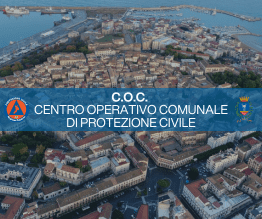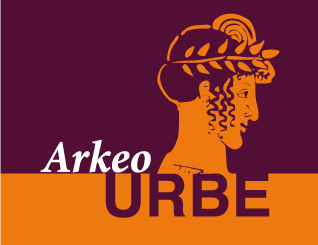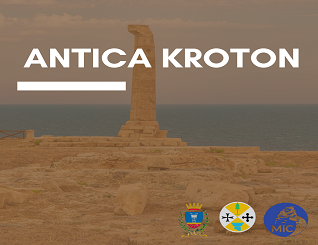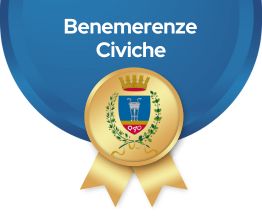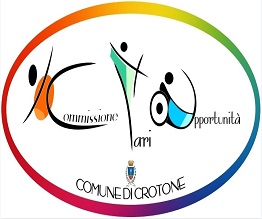Città - Storia e Monumenti
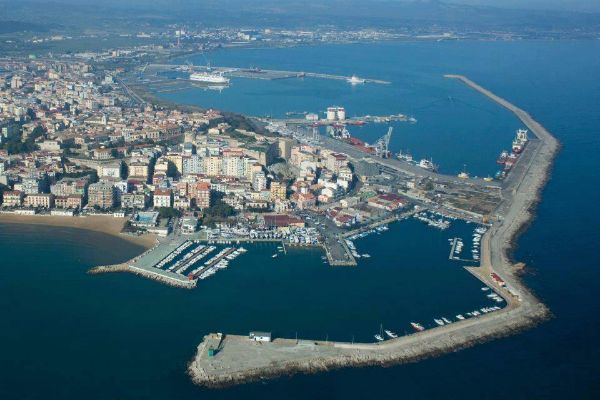
Crotone, [kro'tone] in IPA (Alfabeto Fonetico Internazionale), Croto in latino, Κρότωνin greco antico, Κρότωνας in greco moderno, Cutroni in dialetto crotonese, fa parte - come territorio comunale - dell'Autorità del bacino interregionale del fiume Esaro. Per quanto riguarda il versante meridionale, invece, è immerso interamente nell'area marina protetta di Capo Rizzuto che insieme al promontorio di Capo Colonna chiude la città in una grande conca dividendola dal golfo di Squillace.
La fondazione di Crotone risale al 718 a.C., come citato da Eusebio nel suo "Cronicon" sebbene altre fonti la rimandino al 710 a.C., o al tempo del re Polidoro, nel 743 a.C..
La città venne fondata dagli Achei.
La leggenda narra che il nome Crotone derivi da "Kroton", figlio di Eaco, che morì ucciso per errore dal suo amico Eracle. Questi, per rimediare all'errore compiuto e per onorare l'amico che lo aveva ospitato, lo fece seppellire con solenne cerimonia sulle sponde del torrente Esaro e poi vicino alla tomba fece sorgere la città a cui diede il suo nome. Secondo una leggenda, l'oracolo di Apollo a Delfi ordinò a Myskellos di Rhype di fondare una nuova città nel territorio compreso fra Capo Lacinio e Punta Alice. Dopo aver attraversato il mare ed esplorato quelle terre, Myskellos pensò che sarebbe stato meglio fermarsi a Sybaris, già florida e accogliente anziché affrontare i pericoli e le difficoltà nella fondazione di una nuova città. Il dio adiratogli ordinò di rispettare il responso dell'oracolo. Secondo Ovidio sarebbe stato invece Eracle ad ordinare a Myskellos di recarsi sulle rive del fiume Esaro. Un'altra tradizione fa risalire il nome della città all'eroe Crotone, fratello di Alcinoo Re dei Feaci. Dopo una coesistenza iniziale relativamente pacifica, tra le città magnogreche, verso la metà del VI secolo a.C. iniziarono le discordie, che riproducevano a distanza lo scontro tra Atene e Sparta. Nel 560 a.C. Kroton e Locri iniziarono una guerra decennale, che si concluse con la battaglia della Sagra, vinta dai Locresi, sostenuti da Sparta.
La città era famosa per il suo clima salubre, per la bellezza delle sue donne, per le fertili campagne e per la forza fisica dei suoi uomini, tra cui ricordiamo il pluri olimpionico Milone, tanto che superò ogni altra città greca nel numero di vincitori nei Giochi olimpici: un proverbio diceva "ultimo dei Crotoniati primo dei Greci". Una leggenda narra che Milone partì dalla polis ionica portando un vitello e giunse ad Olimpia con un toro sulle spalle, destando meraviglia e clamore e vincendo quindi numerose gare. La costa presentava un profilo molto diverso da quello attuale, al largo del tratto di mare tra l'antica Enotria (l'odierna Cirò, patria del nettare degli Dei, il vino che veniva dato in premio ai vincitori dei giochi olimpici ateniesi), e l'attuale Le Castella. A poche miglia dalla riva, imponenti per la loro bellezza, spuntavano dalle acque dello Ionio delle isole, ora inghiottite dal mare, visibili dalla costa. Esse orientavano anche i navigatori più inesperti. Melissea, di fronte la costa tra Torre Melissa e Marina di Strongoli, i cui resti i pescatori subacquei conoscono bene, era caratterizzata da una balconata marmorea sommersa, che probabilmente cingeva l'isola. Tyris un boschetto galleggiante abitato da pescatori Brutii (popolo indigeno), era situata fra Torretta di Crucoli e Punta Alice (Cirò Marina). Eranusa, situata davanti l'attuale Le Castella, dove si trovano resti archeologici sommersi: un lastricato di pavimentazione di un'antica strada, un molo con scalinate scalpellate nella roccia, cisterne, un antico faro. La più famosa è sicuramente l'isola di Ogigia, indicata anche come Calipso, descritta da Omero come un vero e proprio paradiso terrestre. L'isola infatti, abitata dalla ninfa Calipso cosi come narra Omero nell'Odissea, ospitò per otto anni Ulisse durante il suo viaggio di ritorno da Troia. Nelle antiche carte geografiche del Regno di Napoli vi è poi un'altra isola di dimensioni simili, indicata con il nome di Dioscoron, ovvero l'isola dei Dioscuri.
Kroton fu anche celebre per i suoi medicitra cui ricordiamo Democede (amico di Pitagora) ed Alcmeone, il quale introdusse la sperimentazione trasformando la medicina, che fino ad allora era contaminata da magia e superstizione, in una scienza. Pitagora, nato a Samo nel 572 a.C. si trasferì a Kroton presso l'amico Democede. Creò una scuola di sapere di scienza, matematica, musica, poiché Pitagora aveva portato con sè il sapere e numerosi manoscritti orientali, provenienti dal Tibet, scritti ebraici del Re Salomone [Clavicole].
Dopo l'arrivo di Pitagora, Kroton mosse contro Sibari, fino ad allora sua alleata. Infatti era abitudine dei crotoniati di recarsi alle terme a Sibaris, o perassistere a spettacoli, oppure per frequentare prostitute. Nel 512 a.C., tre nobili crotoniati vennero sgozzati e i loro corpi furono dati in pasto ai lupi che affollavano le paludi intorno Sibaris, perché uno di loro si era innamorato di una bellissima vestale dagli occhi azzurri, che aveva tentato di rapire. Questo fatto, aggiunto alla rivalità centenaria fra le due città dovuta a motivi commerciali, politici e di diversa appartenenza religiosa, convinsero i crotoniati a scendere in guerra contro Sibaris. Nel 510 a.C. si svolse una battaglia nei pressi del fiume Nika (Cariati), da dove i crotoniati inseguirono e annientarono le forze sibarite in una battaglia finale al guado del fiume Trionto (nei pressi di Mirto Crosia). Secondo la leggendaria tradizione, sierano fronteggiati ben 100.000 crotoniati, guidati dall'atleta olimpico Milone, contro i sibariti che li superavano per tre volte. La vittoria arrise a Kroton nonostante l'inferiorità numerica poiché i sibariti usarono, per la battaglia, cavalli ammaestrati a eseguire passi di danza negli spettacoli al suono dei flauti. I crotoniati, nella battaglia di Nika, iniziarono a suonare i flauti, eseguendo la stessa melodia con la quale i cavalli erano stati ammaestrati per danzare, con il risultato che le avanguardie delle truppe sibarite furono disarcionate immediatamente. E dopo settanta giorni di saccheggi venne deviato,sembra su idea di Pitagora, il corso del fiume Crati i cui flutti fecero sparire Sibari per sempre.
Pitagora con i suoi discepoli conquistò il potere politico della città: in pochi anni si consolidarono governi pitagorici in molte poleis della Magna Grecia costituendo una sorta di confederazione fra città-stato con capitale Kroton, come risulta da numerose monete coniate fra il 480 e il 450 a.C..
Giunta al massimo della sua egemonia politica e culturale, Kroton fu travolta da una serie di conflitti sociali che sfociarono nella sanguinosa rivolta guidata da Cilone durante la quale molti pitagorici furono trucidati e lo stesso Pitagora dovette fuggire da Kroton e riparò a Metaponto. Parallelamente caddero anche gli altri governi consimili e vi furono stragi e persecuzioni di pitagorici in tutte le poleis italiote.
Caduto il governo pitagorico, Kroton visse un periodo di decadenza. Costituì, con Metaponto e Caulonia, la Lega Italiota per difendersi dagli attacchi delle popolazioni lucane. Nel 383 a.C. la federazione fu sconfitta da Dionigi I di Siracusa in una sanguinosa battaglia.
I Romani conquistarono Kroton nel 277 a.C., guidati dal console Cornelio Rufino. Durante la seconda guerra punica Annibale vi tenne i suoi accampamenti invernali per tre anni e di qui si imbarcò per l'Africa nel 203 a.C.. Nel 194 a.C. vi fu dedotta una colonia romana. Seppur decaduta durante l'impero romano, la città risorse nuovamente in epoca Bizantina, quando fu sede di un presidio.
Nel 1284 fu concessa dagli Angioini ai Ruffo di Catanzaro. Alla morte nel 1434 di don Niccolò, figlio di Antonello e ultimo marchese di Crotone, gli successe la figlia Giovannella, assassinata nella sua dimora un anno dopo. Indi le successe la sorella Enrichetta, che sposò in seconde nozze il nobile spagnolo don Antonio Centelles, conte di Collesano e principe diSanta Severina, senza eredi.
Nel XVI secolo, il re di Spagna Carlo V concesse alla città ampi privilegi e ne fece potenziare il porto. Nel 1541, il viceré don Pedro Toledo fece restaurare e fortificare il castello preesistente, oggi noto come "Castello di Carlo V".
Nel XVI secolo la città venne chiamata "Cotrone".
Nel 1928 la città cambiò nome da Cotrone a Crotone.
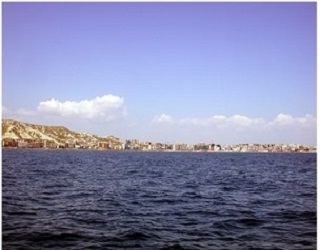
Il suo porto, che strategicamente colma le distanze fra i vicini porti di Taranto e di Messina, favorisce ogni attività di scambio e si propone come traino per l'economia agricola e le attività industriali. L'insediamento industriale ha visto la città protagonista nel periodo a cavallo fra le due guerre mondiali, anche grazie alla vicinanza con la centrale idroelettrica di Calusia, presso Cotronei. La popolazione crotonese raddoppia durante gli anni trenta, fino a sfiorare i 60.000 abitanti odierni. Alla fine degli anni '80 le industrie principali, Pertusola Sud e Montedison, soffrono una profonda crisi, della quale risente l'intera città.
Al termine degli anni '90 Crotone vede esaurirsi la sua storia industriale, la città cade in una profonda crisi finanziaria che la obbliga a ridisegnare la propria dimensione socio-economica. La città oggi è la quinta della Calabria per numero di abitanti, e riveste il ruolo di centro urbano più significativo dell'area ionica della regione.
Il territorio crotonese, lontano ormai da quell'esperienza operaia del secolo scorso, si sta riconvertendo nei settori agroalimentare e turistico.
Città del buon cibo, città di mare, città di storia, città della cultura, Crotone offre ai suoi visitatori un vasto patrimonio culturale che ha sempre più ricca in tutta più di due millenni, passando dalla archeologia della Magna Grecia alle fortificazioni della dinastia aragonese, a un centro storico medievale, dove si misero preziose case nobili e antichi luoghi di culto:
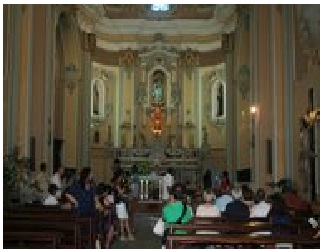
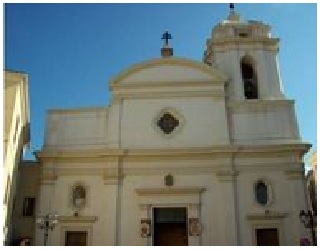
La Cattedrale: la costruzione originaria della Cattedrale dovrebbe risalire al IX secolo. Inizialmente fu intitolata a San Dionigi, successivamente, intorno al 1462-1463 alla Maria Santissima Assunta in cielo. Nel corso dei secoli, la chiesa fu soggetta a vari interventi di restauro, sebbene nel XVI secolo il vescovo A. Lucifero operò una sua ricostruzione integrale, utilizzando materiali asportati dall'antico tempio di Hera Lacinia. L'interno della chiesa è a tre navate, divise da pilastri. Nella Cattedrale degna di nota è la Cappella della Madonna di Capo Colonna, che racchiude l'icona della Madonna di Capo Colonna, detta anche "Madonna Nera" per il colorito scuro con il quale è dipinta la sua carnagione.
La tavola, a cui si attribuiscono molti miracoli, viene festeggiata a Crotone a maggio, mese mariano per eccellenza e risale al sec. X-XI. La cappella invece, consacrata nel 1911, fu progettata dal Farinelli ed affrescata dal Severini. È riccamente decorata da stucchi ed affreschi, realizzati nel 1904 da Filippo de Falco e dal Boschetto, narrano del ritrovamento della Sacra Immagine e degli eventi miracolosi dovuti all'intercessione della Madonna Nera. Degno di nota è anche il Fonte Battesimale collocato nella Cappella Epifania, risalente al secolo XIII.
La Chiesa del Santissimo Salvatore: già esistente nel 1500 è una delle chiese storiche di Crotone. Nel 1783 fu lesionata dal terremoto, ricostruita ex-novo e portata all'attuale grandezza. Prima di questa data, il coronamento della facciata presentava il caratteristico andamento ondulato presente in altre chiese del periodo viceregnale.
La Chiesa dell'Immacolata: la sua costruzione risale al 1554, quando era costituita da un modesto tempietto con cripta sottostante. Nel 1682 sul vecchio oratorio venne costruita la chiesa dedicata all'Immacolata su iniziativa della Congregazione dei Plebei, formata da artigiani e borghesi, cosi chiamata per distinguersi dalla Congregazione dei Nobili che aveva sede nella chiesa di San Giuseppe. Una nuova ed elegante chiesa venne innalzata nel 1758, ampliata successivamente da Girolamo Cariati e consacrata da Monsignor Capocchiani. La consacrazione avvenne nel 1777. La facciata della chiesa, di impostazione neoclassica, risale al 1830 circa, ed è, quindi, posteriore alla sua costruzione. Degna di nota è la cripta a cui si accede tramite una porta lignea del Seicento. È costituita da due archi che immettono nell'attuale cappella, con cornicioni in pietra tufacea locale e pavimento in terracotta dipinto di rosso, tutti originali del '500. L'ambiente è costituito da una porta e lastroni in vetro e ferro che racchiudono, adagiati su tre gradini, i 490 teschi dei frati della Confraternita. Sul corpo superiore, al lato destro, è invece conservata una scultura lignea rappresentante il Cristo Crocifisso, realizzato tra il 1630-1640. Si tratta di uno dei pochissimi crocifissi al mondo in cui il Cristo è rappresentato con gli occhi aperti, un attimo prima di spirare. In origine era conservato nella cappella del convento-ospedale in cui operavano i Frati Fatebenefratelli. Con la soppressione del convento fu trasferito nella chiesa di San Giuseppe, nella cappella gentilizia della famiglia Zurlo, in cui fu conservato in cattive condizioni venendo sottoposto all'azione dell'acqua piovana. Infatti, il 3 maggio del 1956, nel corso di una processione, la testa si staccò causando la frantumazione del cristallo nell'occhio sinistro, ancora visibile. Il crocifisso fu allora trasferito nella chiesa dell'Immacolata ed opportunamente restaurato.
La Chiesa di Santa Maria in Prothospatariis: risalente al XV secolo, è per questo una delle più antiche di Crotone. Nel 1525 infatti è testimoniata la sua esistenza come parrocchia entro le mura. Di regia nomina, fu forse fondata dalla famiglia nobile "Prothospatariis", di origine greca, che quindi ne aveva anche il patronato. Secondo altri studiosi invece, il nome alluderebbe ai Prenotari, ovvero ad un insieme di persone notabili del luogo che avevano il patronato in questa chiesa. Fino al 1777 aveva due altari: uno dedicato a San Luigi Gonzaga, l'altro a San Gaetano. La chiesa, ad una navata, presenta un corpo allungato con abside semicircolare. La facciata principale ha un portale di pietra tufacea sormontato da una trabeazione a linea continua decorata con motivi floreali e sorretta da mensole laterali. Al di sopra vi è un rosone con vetri colorati.
La Chiesa di Santa Chiara: parte del complesso monastico di Santa Chiara, le strutture originarie vengono fatte risalire alla fine del 1300, mentre l'attuale costruzione risente degli apporti del 1700 ed inizio 1800. La chiesa, in stile barocco, è stata consacrata nel 1774, come è riportato su una lapide marmorea posta all'entrata. La lapide, in latino, narra l'abbellimento, la ricostruzione, i tesori offerti nella seconda metà del 1700 dalla badessa M. Angelica Galluccio. Il convento ospitava le figlie delle famiglie nobili crotonesi: ne fanno fede i molti stemmi nobiliari (Galluccio, Ventura, Sculco, Lucifero) apposti su ogni dono offerto al monastero. La chiesa di Santa Chiara si configura come il gioiello del centro storico della città, soprattutto per il ricco patrimonio che custodisce al suo interno, tra cui un armadio che racchiude un organo a canne, costruito nel 1753 da Tommasio De Martino, organario della regia cappella di Napoli e le gelosie in legno del coro, a cui era affidato il compito di custodire la clausura delle clarisse.
L'Ex - Municipio: attuale Casa della Cultura, fu in origine sede del Convento di San Giovanni di Dio, retto dall'Ordine religioso dei "Fratelli Ospedalieri" e insediato nel 1667. Annesso all'Ospedale, chiamato anche dal popolo "Fatebenefratelli", era una chiesetta dedicata alla Madonna della Pietà o Addolorata. L'ospedale giunse ad ospitare circa 600 ammalati poveri, anche forestieri. Nel 1777 il numero dei frati del convento scese a 3 e, di conseguenza, anche per mancanza di fondi, il convento fu soppresso alla fine del secolo. L'ospedale rimase attivo divenendo pubblico con il nome di San Giovanni di Dio. Nel 1883 ca. l'edificio fu riadattato per ospitarvi il Palazzo Municipale, mentre la chiesa fu trasformata in magazzini e l'ospedale fu spostato. In seguito fu anche sede di scuole elementari e di alcuni uffici dell'ASL. Nella seconda metà dell'800 l'edificio fu molto rimaneggiato. Il vecchio campanile fu trasformato in torre dell'orologio ed alla facciata fu data una impronta ottocentesca. Incorrispondenza del balcone centrale nel 1906 sono state poste due lapidi: una a ricordo dei magistrati della Repubblica Napoletana morti a seguito della Restaurazione Sanfedista; l'altra a commemorare la spedizione dei Fratelli Bandiera, sbarcati a Crotone nel 1844.
La Chiesa di San Giuseppe: il corpo centrale risale probabilmente al XVI, mentre le cappelle gentilizie furono aggiunte nel 1719, per volontà del sacerdote Onofrio Sandria come riporta un'iscrizione lapidea sul portale. Fu restaurata nel 1744 dopo un violento terremoto e consacrata nel 1756. Si ritiene che la sua costruzione sia stata voluta da alcune famiglie nobili crotonesi riuniti nella Confraternita dei Sette dolori della Vergine Maria o dell'Addolorata, che la offrirono poi in dono alla città. L'interno è costituito da una navata centrale con ai lati 4 cappelle edificate dalle seguenti famiglie gentilizie: Galluccio, Lucifero, Sculco, Zurlo (appartenuta quest'ultima alla famiglia Ayerbis d'Aragona). L'altare maggiore è stato, invece, donato dalla famiglia Berlingieri. La facciata è ornata da un bel portale in stile tardo barocco in arenaria.
In diverse zone di Crotone sono ubicati alcuni monumenti rappresentanti personaggi o momenti storici importanti per la storia della città:
Monumento ai Fratelli Bandiera
Monumento ai caduti 1915-1918
Monumento a Carlo Turano
Monumento a Raffaele Lucente
Monumento ad Armando Lucifero
Il Legionario
Crotone, [kro'tone] in IPA [International Phonetic Alphabet], Croto in Latin, , Κρότωνin in ancient Greek, Κρότωνας in modern greek, Cutroni in dialect of Crotone, is as part of the municipal zone, an area of the Interregional Basin Authority of Esaro river. As for the south side, on the other hand, it is completely immersed in the protected marine area of Capo Rizzuto which together with the promontory of Capo Colonna closes the town in a large basin dividing the Gulf of Squillace.
The foundation of Crotone dates back to 718 BC, as quoted by Eusebius in his
"Cronicon" although other sources make reference to 710 BC, or the time of King Polidoro, in 743 BC.
The town was founded by the Achaeans.
Legend has it that the name Crotone derives from "Kroton", son of Aeacus, who died accidentally killed by his friend Heracles, who to remedy the mistake and to honor the friend who had hosted him, had him buried with solemn ceremony on the Esaro stream banks and then near the tomb gave rise to the city to which he gave his name. According to legend, the oracle of Apollo at Delphi ordered Myskellos of Rhype to found a new city in the area between Cape Lacinio and Punta Alice. After crossing the sea and exploring those lands, Myskellos thought it would be better to stop at Sybaris, already thriving and welcoming instead facing with the dangers and difficulties in the foundation of a new city. But the God ordered him to respect the response of the oracle. According to Ovid it was instead Heracles to have ordered Myskellos to go on the banks of the river Esaro. One other tradition traces the name of the city to the hero Crotone, brother of King Alcinous of the Phaeacians. After a relatively peaceful start coexistence between the Great Greek city, towards the half of the sixth century BC began the discord, which copied remotely confrontation between Athens and Sparta. In 560 BC Kroton and Locri began a ten-year war, which ended with the battle of the festival, won by the Locrians, supported by Sparta.
The city was famous for its healthy climate, the beauty of its women, its fertile countryside and the physical strength of his men, among which the pluri olympian Milone, so that it surpassed all other Greek cities in the number of winners in Olympics: a proverb said "last of Crotoniati first of the Greeks." According to legend, Milone left from the Ionian polis carrying a calf and came to Olympia with a bull on his shoulders, arousing wonder and clamoren and then winning several races. The coast had a very different profile from now, off the stretch between the ancient sea between the old Enotria (today Cirò home of the nectar of the Gods, the wine which was given as a prize to the winners of the Olympic Games of Athens), and the current "Le Castella". A few miles from the shore, impressive for their beauty, they sprouted from the Ionian Islands waters, now Swallowed from the sea, visible from the coast. They even oriented the most inexperienced sailors. Melissea, opposite the coast between Torre Melissa and Marina di Strongoli and whose remains are well known by underwater fishermen, was characterized by a sunken marble balcony, which probably encircled the island.
Tyris a floating grove inhabited by Brutii fishermen (indigenous people), was located between the Tower of Crucoli and Punta Alice (Cirò Marina). Eranusa, located in front of the current Le Castella, ist he place where archaeological remains are submerged.The most famous isle is certainly the island of Ogygia, also referred to as Calypso, described by Homer as a real paradise on earth. The island is, infact, inhabited by the Calipso nymph as Homer tells in the Odyssey, hosted Ulysses for eight years during his return journey from Troy. In the ancient maps of the Kingdom of Naples, there is then an other island of similar size, as indicated by the name of Dioscoron, or the island of Dioscuri.
Kroton was also famous for his medicitra. We remember Democedes (friend of Pythagoras) and Alcmaeon, who introduced experimentation transforming medicine, which until then was contaminated with magic and superstition, into a science. Pythagoras was born in Samos in 572 BC and then he moved to Kroton at his friend's Democedes.
He created a school of thought about Science, Maths, Music, since Pythagoras had brought with him the knowledge of many oriental writings, from Tibet, Jewish writings of King Solomon.
After the arrival of Pythagoras, Kroton moved against Sybaris, which had been its ally. In fact it was the custom of Crotonian to go to spas in Sibaris, or to attend shows, or to meet prostitutes. In 512 BC, three noble Crotoniati were slaughtered and their bodies were thrown to the wolves who crowded around the marshes in Sibaris, because one of them was in love with a beautiful blue-eyed vestal who he had tried to kidnap. This fact, added to the centuries of old rivalry between the two cities due to commercial reasons, political and various religious affiliations, convinced the Crotonian to go to war against Sibaris. In 510 BC there was a battle near the river Nika (Cariati), from where the Crotonian pursued and destroyed the sibaritr forces in a final battle at the ford of the river Trionto (near Mirto Crosia). According to legendary tradition, they had faced as many as 100,000 Crotonian, led by Olympic athlete Milone, against the sybaritic that surpassed them three times. The victory went to Kroton despite the numerical inferiority since the sybaritic use, for the battle, some horses trained to follow dance steps dance in the shows to the sound of flutes. The Crotonian, in the Battle of Nika, started playing the flute, performing the same melody with which the horses had been taught to dance, with the result that the vanguard of Sibarite troops were disarcionated immediately. And after seventy days of looting the river Crati was diverted, it seems based on an idea of Pythagoras, and its waves made Sybaris disappear forever.
Pythagoras and his disciples conquered political power of the city in a few years were consolidated Pythagoreans governments in many poleis of Ancient Greece constituting a sort of confederation of city-states with Kroton's capital, as reflected by numerous coins minted between 480 and 450 B. C . When it reached the peak of its political and cultural hegemony, Kroton was overwhelmed by a series of social conflicts which resulted in the bloody revolt led by Cilone during which many Pythagoreans were killed and the same Pythagoras had to flee from Kroton and shelter to Metaponto. In parallel other similar governments also fell and there were massacres and persecution of the Pythagoreans in all Italiote poleis.
Fallen the Pythagorean government, Kroton experienced a period of decline. It formed, with Metaponto and Caulonia, the Italiota League to defend itself against the attacks of the Lucanians. In 383 BC the federation was defeated by Dionysius I of Syracuse in a bloody battle.
The Romans conquered Kroton in 277 BC, led by the Consul Cornelio Rufino. During the Second Punic War Hannibal held its camps for three years and here he sailed to Africa in 203 BC. In 194 BC a Roman colony was deducted. Although it fell during the Roman Empire, the city resources again in the Byzantine era, when it was home to a garrison.
In 1284 it was granted by the Anjou to Ruffo of Catanzaro. On the death, in 1434, of Don Niccolò, son of Antonello and the last marquis of Crotone, the daughter Giovanella succeeded, who was murdered in her home a year later. After she was succeeded by her sister Henriette, who remarried with the Spanish nobleman don Antonio Centelles, Count of Collesano and Prince of Santa Severina, without heirs.
In the sixteenth century, the King of Spain Charles V granted the town many privileges and made the port increase. In 1541, the Viceroy don Pedro Toledo made restore and fortify the existing mansion, now known as the "Castle of Charles V".
In the sixteenth century the city was called "Cotrone".
In 1928 the city name changed from Cotrone in Crotone.
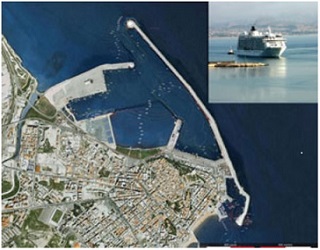
Its port, which strategically bridges the gap between the neighboring ports of Taranto and Messina, favors every activity of exchange and provides the driving force for the agricultural economy and industrial activities. The industrial area has seen the protagonist city on the borderline between the two world wars, thanks to its proximity to the Calusia hydroelectric plant at Cotronei. The cotronese population doubles during the thirties, to nearly 60,000 inhabitants today. At the end of the 80 major industries, Pertusola Sud and Montedison, suffering from a deep crisis, from which affected the whole city.
At the end of the 90s Crotone sees its industrial history at a decline, the city falls into a deep financial crisis that forces it to repaint its socio-econimica size. The city today is the fifth of Calabria by population, and plays the role of the most significant urban center of the Ionian area of the region.
The Crotonese territory, far now from the working experience of the last century, it is converting in the agri-food and tourism sectors.
City of good food, seaside town with a lot of history, city of culture, Crotone offers visitors a vast cultural heritage that has become richer and ticher throughout more than two millennia, passing by the Archeology of Ancient Greece to the fortifications of the Aragonese dynasty, a medieval old town, where they set precious noble houses and ancient places of worship:
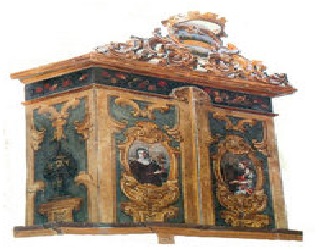
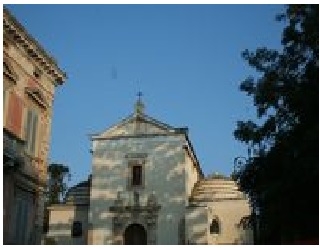
The Cathedral: the original construction
of the Cathedral should go back to the ninth century. Initially it was
dedicated to St. Dionysius, later, around 1462-1463 to the Blessed Virgin
Mary's Assumption into heaven. Over the centuries, the church was subject to
various restorations, although in the sixteenth century Bishop A. Lucifer
operated its complete reconstruction, using materials removed from the ancient
temple of Hera Lacinia. The interior of the church has three naves, divided by
pillars. In the noteworthy Cathedral there is the Chapel of the Madonna di Capo Colonna,
which contains the icon of the Madonna di Capo Colonna, also called the
"Black Madonna" because of the dark color with which its complexion
is painted. The painting, to which are attributed many miracles, is celebrated
in Crotone in May, the Marian month and dates from the
tenth or eleventh century. The chapel however,
consecrated in 1911, was planned by Farinelli and painted by Severini. It is
richly decorated with stucco and decorations painted in 1904 by Filippo de
Falco and by Boschetto, who narrate the discovery of the sacred image and
miraculous events due to the intercession of the Black Madonna.
Noteworthy is also the baptismal font located at the Epiphany Chapel, dating
from the thirteenth century.
The Church of the Holy Savior: already existing in 1500 is one of the
historical churches of Crotone. In 1783 it was damaged by the earthquake,
rebuilt and brought to the present size. Before this date, the crowning of the
facade showed the characteristic wavy pattern present in other churches of "viceregnale"
period.
The
Church of the Immaculate: its construction dates back
to 1554, when it was built from a modest temple with a crypt below. In 1682 the
old chapel was built. The church was dedicated to the Immaculate at the
initiative of the Congregation of the Plebs that was formed by craftsmen and
bourgeois, so called to distinguish themselves from the Congregation of the
Nobles who was based at St. Joseph's Church. A
stylish new church was erected in 1758, later enlarged by Jerome Cariati and
consecrated by Bishop Capocchiani. The church was consecrated in 1777. The
facade of the church, the neoclassical approach, dates back to around 1830, and
it is thus back to its construction. Worthy of note is the crypt which is
accessed via a wooden door of the seventeenth century. It is made by two arcs
that enter in the current chapel, with cornices in stone and terracotta red painted floor, all original from 500. The
environment is constituted by a door and slabs of glass and iron which enclose,
lying sau three steps, 490 skulls of the monks of the Brotherhood. On the upper
body to the right side, it is instead preserved a representative wooden
sculpture Christ Crucified, built between 1630-1640. It is one of the few in
the world where the crucified Christ is represented with open eyes, just before
expiring. It was originally kept in the chapel of the convent-hospital where the
"Fatebenefratelli Friars". With the
suppression of the monastery the Christ was transferred to the Church of St.
Joseph, in the chapel of the Zurlo family, where he was kept in poor conditions
being subjected to the action of rainwater. In fact, on 3 May 1956, during a
procession, the head causing the detachment of the glass shattering in the left
eye, still visible. The crucifix was then transferred to the Church of the
Immaculate and properly restored.
The Church of Santa Maria in Prothospatariis: dating back to the fifteenth century, is one of the oldest of
Crotone. In 1525, in fact, its existence as a parish is witnessed within the
walls. By royal appointment, it was probably founded by the noble family
"Prothospatariis", of Greek origin, which then also had the
patronage. According to other scholars, however, the name alludes to Prenotari,
or to a set of notable locals who were patrons in this church. Up to 1777 it
had two altars, one dedicated to Sa Luigi Gonzaga, The other in San Gaetano.
The church, a nave, presents an elongated body with a semicircular apse. The
main facade has a tuff stone doorway topped by an entablature in unbroken line
decorated with floral patterns and supported by side shelves. Above there is a
rosette with colored glasses.
The
church of Santa Chiara: the monastery of Santa Chiara,
the original structures date back to 1300, while the current building reflects
the contributions of 1700 and early 1800. The church, in Baroque style, was
consecrated in 1774, as it appears on a marble plaque placed at the entrance.
The plaque, in Latin, tells the landscaping, the reconstruction, the treasures
offered in the second half of 1700 by Abbess Angelica M. Galluccio. The convent
housed the daughters of noble families of Crotone as coats of arms, (Galluccio,
Ventura, Sculco, Lucifer) affixed to every gift offered to the monastery, show.
The church of Santa Chiara is set up as the jewel of the historic center of the
city, especially for the rich heritage which houses
in its interior, including a cabinet which encloses a pipe organ, built in 1753
by Tommasio De Martino, organio of Naples chapel director and wooden shutters
of the chorus, which was entrusted with the task to guard the cloistered Poor
Clares.
The former - City Hall: Current
Culture House, was originally home of the Convent of St. Giovanni di Dio, run
by the order of "Hospital Brothers" and took ist office in 1667.
Attached to the Hospital, also called by the people
"Fatebenefratelli", It was a church
dedicated to Our Lady of Sorrows or Pietà. The hospital accommodated about 600
poor sick people, even foregners. In 1777 the number of monks of the monastery
fell to 3 and, consequently, also for lack of funds, the convent was abolished
at the end of the century. The hospital remained active becoming public under
the name of St. Giovanni di Dio. In 1883. the building was restored to house
the town hall, while the church was turned into warehouses and the hospital was
moved. Later it was also home to some elementary schools and some health offices.
In the second half 800, the building was altered. The
old tower was transformed into a clock tower and the facade was given a
nineteenth-century mark. At the central balcony in 1906 two plaques were
placed, one in memory of the Neapolitan Republic magistrates dead after the Sanfedista
Restoration; the other to commemorate the expedition of the Bandiera Brothers,
landed at Crotone in 1844.
The Church of St. Joseph: the main building probably dates from the sixteenth,
while the chapels were added in 1719, by the will of the priest Onofrio Sandria
as reported in a stone inscription on the portal. It
was restored in 1774 after a massive earthquake and consecrated in 1756. It is
believed that its construction was commissioned by some noble families of Crotone
gathered in the Brotherhood of the Seven Sorrows of Vergine Maria, who then
offered it as a gift to the city. The
interior is made up of a central aisle with the
sides 4 chapels built from the following noble families: Galluccio, Lucifer,
Sculco, Zurlo (this last belonged to Ayerbis of Aragon family). The altar was
donated by the Berlingeri family. The facade is decorated with a beautiful
portal in late baroque sandstone.
In different areas
of Crotone it is located several monuments representing characters or important
historical moments in the history of the city:
Monument of the Fratelli Bandiera
War Memorial 1915-1918
Monument of Carlo Turano
Monument of Raffele Lucente
Monument of Armando Lucifero
The Legionnaire
Fonte: Settore Turismo
Data ultimo aggiornamento 11 Agosto 2017
Revisionato da Alessandra Vrenna
Traduzione a cura di:










